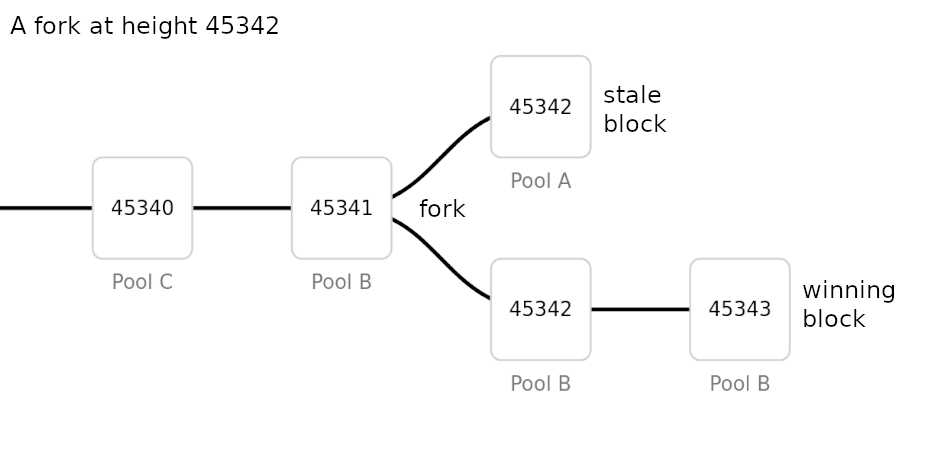I have recently been looking at mining pool behavior during forks. Which block does a pool choose to mine on during a fork? Do they behave rationally and mine on their own block? In this post, I’ll detail the mining pool behavior during forks and give some recent examples of pool behavior.
I’ve also published a short-form video1 on this topic on Twitter and YouTube.
In Bitcoin, a blockchain fork usually happens when two mining pools find a block based on the same previous block at roughly the same time. The fork is usually resolved with the next block building on top of one of the two fork-blocks. One block becomes part of the active chain (wins) while the other one becomes stale (loses).

During a fork, the game theory is as follows: Pools that mined one of the fork blocks always want to mine on their own block and never on the competing fork-block. The chance of finding a block is equal to the share of network hashrate the pool has, and does not depend on who found the previous block. A pool with 5% of the network hashrate has a 5% chance to find a block on the competing pool’s block and a 5% chance of finding a block on his own block. However, mining on its own block, the pool can find the winning block and yield two blocks, the fork-block and the winning-block. Mining on the competing block, it can only yield the winning-block. Continue Reading…..
- Written by: 0xB10C



Leave a Reply